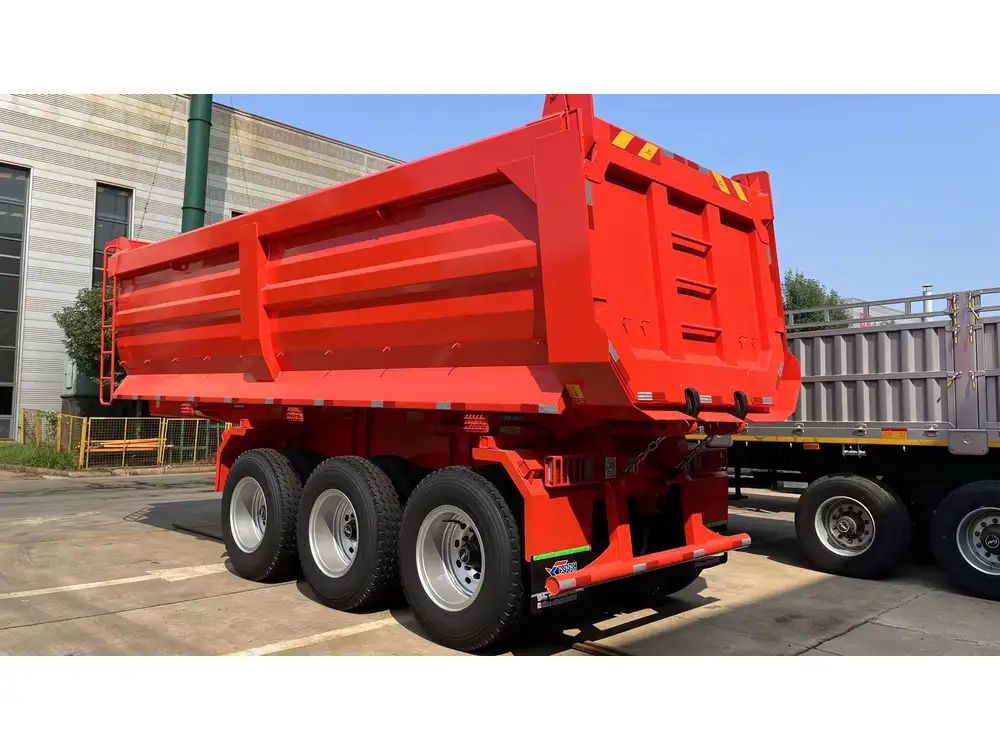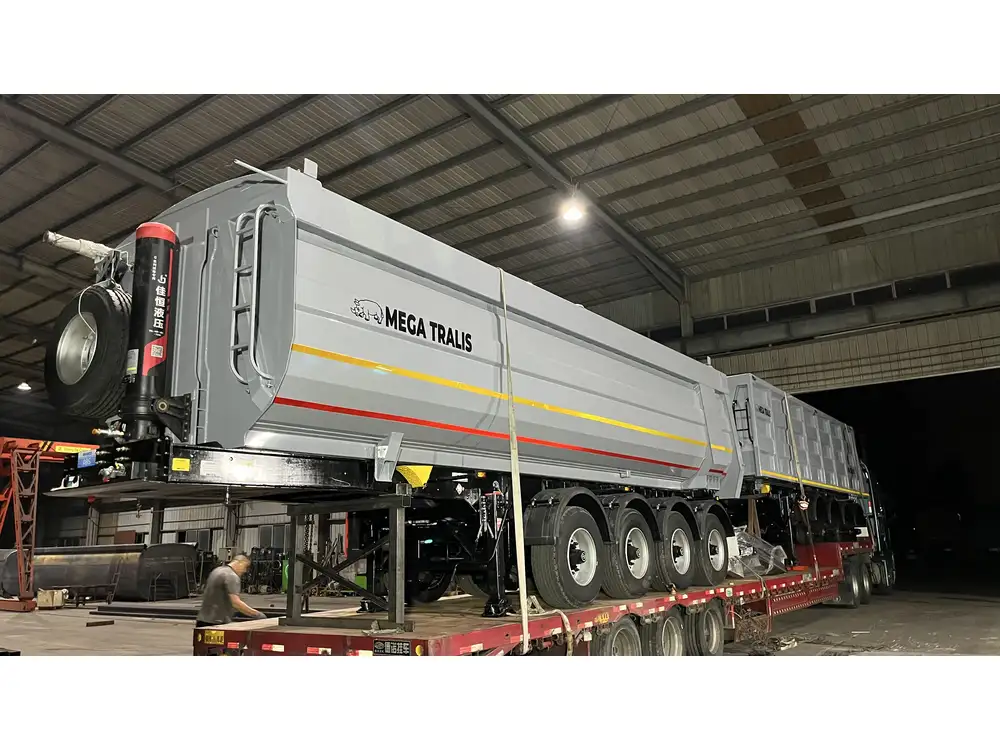When it comes to operating a MAC dump trailer, understanding the proper techniques for raising and lowering the unit is fundamental to ensuring efficiency and safety. Whether you’re transporting materials across construction sites or moving equipment, mastering this process will enhance your workflow and maximize productivity. In this detailed guide, we will walk you through each step, addressing common pitfalls, providing tips for safe operation, and offering solutions to frequently asked questions.
Understanding the MAC Dump Trailer Mechanism
Overview of MAC Dump Trailers
MAC dump trailers are engineered for durability and functionality. They come with a variety of features such as:
- Payload Capacity: Depending on the model, MAC dump trailers can carry loads ranging from 10,000 lbs to over 30,000 lbs.
- Hydraulic Systems: The hydraulic cylinders are crucial for raising and lowering the trailer bed, powered by the truck’s hydraulic system or a dedicated pump.
- Construction Materials: Made with high-quality steel or aluminum for optimal strength and weight efficiency.

The Hydraulic System Explained
The heart of a dump trailer’s operation is its hydraulic system, which comprises:
- Hydraulic Pump: Supplies pressurized fluid to the hydraulic cylinders.
- Hydraulic Reservoir: Stores hydraulic fluid, maintaining the system’s pressure.
- Cylinders: Convert hydraulic pressure into mechanical energy to lift the trailer bed.
Step-by-Step Guide on Raising Your MAC Dump Trailer
Raising a MAC dump trailer involves a series of precise operations to ensure safety and efficiency. Below are the steps outlined in a clear, structured manner.
Step 1: Safety Precautions
Before engaging the hydraulic system, ensure you follow these safety measures:
- Wear Personal Protective Equipment (PPE): Gloves, safety glasses, and steel-toed boots.
- Inspect Your Equipment: Verify that the trailer and hydraulic system are in good condition with no visible leaks.
- Clear Surroundings: Ensure the area around the trailer is free of obstructions and personnel.

Step 2: Preparing the Trailer
- Set the Brake: Engage the trailer’s parking brakes to prevent any movement during operation.
- Choose a Level Surface: If possible, operate the trailer on flat ground to maintain stability.
Step 3: Connect the Hydraulic Lines
- Inspect Connections: Check hoses and fittings for wear or damage before connecting.
- Connect Hydraulic Lines: Securely attach the hydraulic lines to ensure proper fluid transfer. Ensure that connections are tight and leak-free.
Step 4: Operate the Hydraulic Controls
- Activating the Pump: If using a dedicated pump, turn on the system to allow fluid to flow to the cylinders. For truck-powered systems, ensure the truck engine is running.
- Press the Raise Button: Gradually engage the hydraulic control lever or button to raise the trailer. Listen for any abnormal sounds which could indicate a malfunction.

Step 5: Raising the Trailer
- Monitoring the Lift: Observe the hydraulic lift as the bed raises. Ensure that the movement is smooth and controlled.
- Stop at Desired Height: Once you reach the required height, release the control lever gently to avoid sudden drops.
Step 6: Post-Operation Safety
- Lower the Trailer: To lower the trailer safely, reverse the procedure by pressing the lower button. Make sure the area underneath is clear.
- Disconnect Hydraulic Lines: After safely lowering the trailer, disconnect the hydraulic lines, ensuring to check for leaks.
- Conduct Final Checks: Inspect the trailer for any signs of wear or damage post-operation.
Common Issues and Troubleshooting
Every operator may encounter complications when raising a dump trailer. Below, we address potential issues and recommended actions:
| Issue | Cause | Solution |
|---|---|---|
| Hydraulic Leak | Worn hoses or fittings | Replace damaged components |
| Slow Lifting | Low hydraulic fluid levels | Check and refill the hydraulic reservoir |
| Uneven Raising | Imbalanced load | Redistribute the load evenly before operation |
| Trailer Won’t Lift | Pump malfunction | Consult a professional for repair or replacement |

Tips for Optimal Use
To ensure optimal performance and longevity of your MAC dump trailer, consider the following tips:
- Regular Maintenance: Schedule routine inspections of your hydraulic system, brakes, and trailer components.
- Proper Loading Techniques: Always abide by the manufacturer’s guidelines for weight distribution and total load capacity.
- Utilize Proper Training: Ensure that all operators are adequately trained in both trailer operation and safety.
- Keep Manual Handy: Always refer to the owner’s manual for specific operating instructions related to your trailer model.
Advantages of Using a MAC Dump Trailer
The importance of choosing the right dump trailer can’t be overstated. MAC dump trailers offer several advantages:
- Versatility: Can be used for a variety of applications from landscaping to construction.
- Enhanced Safety Features: Built-in safeguards help minimize potential accidents during operation.
- Durability: Designed for heavy use and built to withstand harsh conditions.
Comparing MAC Dump Trailers with Competitors
To fully understand why MAC dump trailers stand out, consider how they compare with other popular brands. Below is a comparison chart that outlines key features:
| Feature | MAC Dump Trailer | Competitor A | Competitor B |
|---|---|---|---|
| Payload Capacity | 10,000 – 30,000 lbs | 8,000 – 25,000 lbs | 7,500 – 28,000 lbs |
| Hydraulic System | Twin Cylinder | Single Cylinder | Quad Cylinder |
| Warranty | 5 Years | 3 Years | 4 Years |
| Customization | High | Limited | Moderate |

FAQs About MAC Dump Trailers
What is the average lifespan of a MAC dump trailer?
With proper maintenance, a MAC dump trailer can last up to 15 years or more, depending on usage and care.
Can I use my MAC dump trailer for off-road conditions?
Yes, MAC dump trailers are robustly built to handle off-road conditions, but ensure that the terrain is not excessively rough to avoid damaging the equipment.

How often should I conduct maintenance?
It’s advisable to conduct routine checks at least once a month, with more frequent inspections during heavy use.
What types of fluids should I use in the hydraulic system?
Always use fluids recommended by the manufacturer, typically ISO 32 or similar hydraulic fluids to ensure optimal performance.
Conclusion
Raising a MAC dump trailer might seem straightforward, yet it encompasses various critical steps that involve safety measures, mechanical awareness, and proper tools. By following the methods outlined in this guide, operators can efficiently maneuver their trailers while minimizing risks. Understanding the intricacies behind the hydraulic system and maintaining the trailer’s key components will ensure peak performance and longevity for years to come.
For further inquiries or to explore options for purchasing a MAC dump trailer that meets your specific needs, feel free to contact our knowledgeable sales team.



